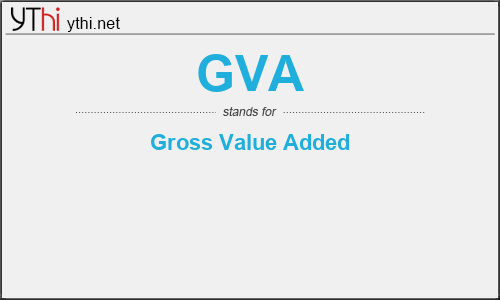What does GVA mean? What is the full form of GVA?
The full form of GVA is Gross Value Added.
In economics, gross value added (GVA) is the measure of the value of goods and services produced in an area, industry or sector of an economy. “Gross value added is the value of output minus the value of intermediate consumption; it is a measure of the contribution to GDP made by an individual producer, industry or sector; gross value added is the source from which the primary incomes of the SNA are generated and is therefore carried forward into the primary distribution of income account.”
The gross added value, or GVA, is known as a macro-magnitude in terms of terms within the economy. A macro-magnitude is a quantified measure of facts and data of the economy within a certain region or country.
From the accounting point of view, it is defined as the difference between the number of sales and purchases. This means to put it more simply is the difference between market prices and the cost of production.
In the business sector, the gross value is the difference between income and variable fixed capital together with what the raw material costs for production in said company, this serves to get an idea of where the well-known value-added tax comes from.
With respect to the economy, this is the additional value acquired by the different goods when they are transformed through the production process. To explain it in a simple way this would be the value that is added to the raw material after being produced, as to the wood after it has been converted into kitchen furniture.
In order to know the gross added value in a service or transport company, the value of the raw material, fuel expenses, or the services provided by third parties to the revenues must be subtracted. This is the same as saying that all expenses are subtracted from earnings, not including salaries.
GVA
means
Gross Value Added![]()
Translate Gross Value Added to other language.


Leave a Reply
You must be logged in to post a comment.